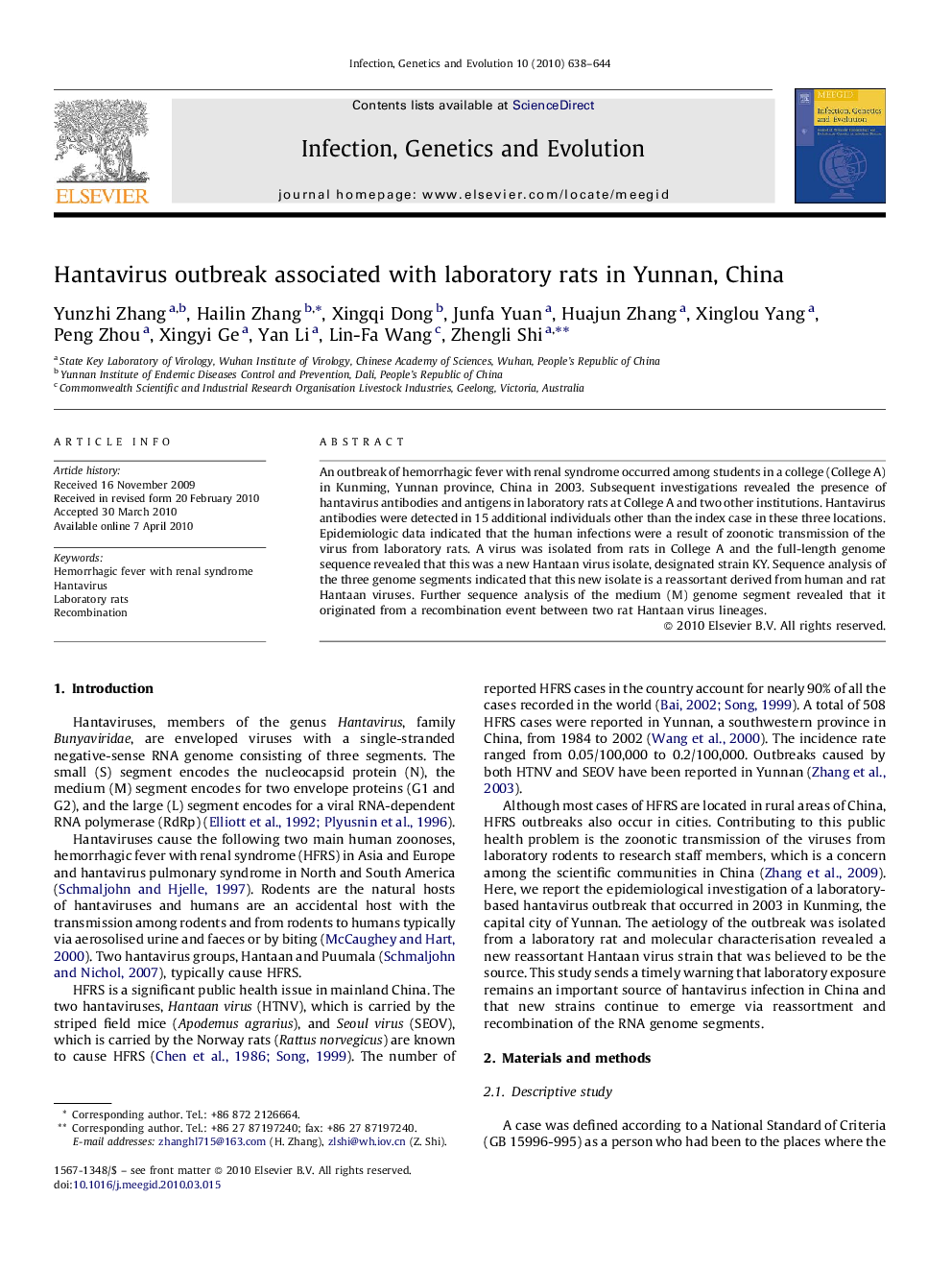| Article ID | Journal | Published Year | Pages | File Type |
|---|---|---|---|---|
| 2823253 | Infection, Genetics and Evolution | 2010 | 7 Pages |
An outbreak of hemorrhagic fever with renal syndrome occurred among students in a college (College A) in Kunming, Yunnan province, China in 2003. Subsequent investigations revealed the presence of hantavirus antibodies and antigens in laboratory rats at College A and two other institutions. Hantavirus antibodies were detected in 15 additional individuals other than the index case in these three locations. Epidemiologic data indicated that the human infections were a result of zoonotic transmission of the virus from laboratory rats. A virus was isolated from rats in College A and the full-length genome sequence revealed that this was a new Hantaan virus isolate, designated strain KY. Sequence analysis of the three genome segments indicated that this new isolate is a reassortant derived from human and rat Hantaan viruses. Further sequence analysis of the medium (M) genome segment revealed that it originated from a recombination event between two rat Hantaan virus lineages.
